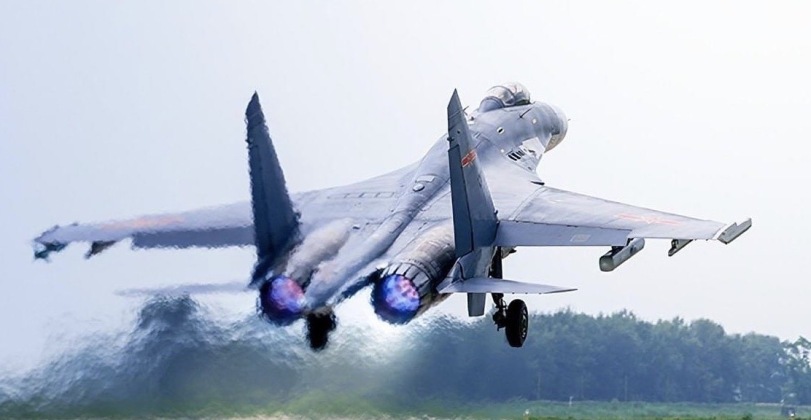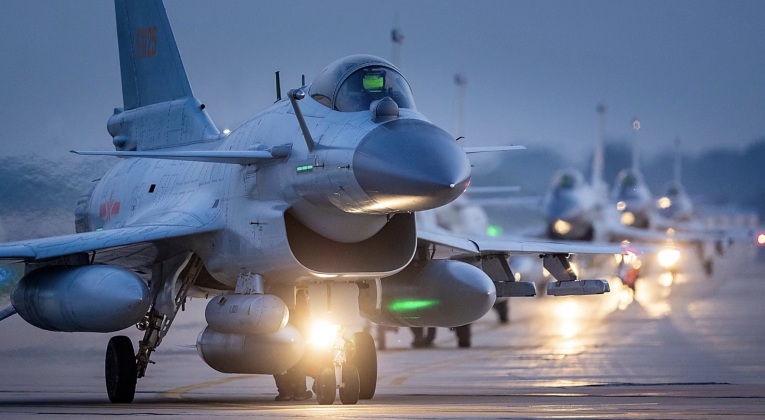News
China Begins Phasing Out Russian Engines From Single Engine Fighter Units: J-10s Get WS-10 Turbofan
The Chinese People’s Liberation Army (PLA) Air Force has begin to re-engine its J-10B fighter aircraft with indigenous WS-10B powerplants, retiring their original Russian-supplied AL-31 engines long before their service lives expired. This follows confirmation in January that twin engine J-11B fighters, which serve as heavier longer ranged counterparts to the J-10Bs, have also begun to see their AL-31 engines retired in favour of the WS-10B. The J-11B’s entry into service around 2008 marked a turning point in which China’s aviation industry began producing fighters broadly on par with their Russian counterparts in terms of performance, with imports of combat aircraft declining sharply from that time as a distinct Chinese qualitative and technological edge began to materialise in the 2010s. China’s engine industry nevertheless remained behind its overseas rivals, forcing a continued reliance on the AL-31 to power indigenous J-10 and J-11 fighters. The AL-31 first became operational in the Soviet Air Force in 1985, and was the most powerful engine integrated onto a Cold War era fighter providing the Su-27, the first aircraft to use it, with very high degrees of manoeuvrability. Almost all Russian fighters continue to rely on the AL-31 and its derivatives today, primarily due to the results of the economic and industrial decline in the country which followed the disintegration of the Soviet Union.

The WS-10B was first integrated onto the J-11, with the J-10 presenting a higher risk due to its single engine design and lack of engine redundancy. The beginning of integration of the indigenous powerplant onto the J-10 in the late 2010s was thus widely seen to indicate that Chinese turbofan engines had attained a very high degree of reliability. China had produced reliable turbojet engines for single engine fighters throughout much of the Cold War, namely for its J-7 fighter which saw several hundred units exported across the world, but having fallen behind Soviet and U.S. technologies by the end of the conflict it took considerable time and investment to bridge the gap. The development of the WS-10C engine has thus been a further landmark, and although only 91 percent as powerful as the top engine for an American twin engine jet, the F-22’s F119, it still provided the indigenous J-20 fifth generation fighter with a supercruise capability and improved range and reliability over the enhanced AL-31 derivative which the J-20 was previously reliant on. The engine made the J-20 the only supercruise capable fifth generation fighter to be both operational and in production worldwide – meaning it could fly supersonically for sustained periods without using its afterburners.

The phasing out of the AL-31 from J-10 units will help to standardise the fleet of J-10s, J-11s, newer J-16s, and carrier based J-15s, on variants of the WS-10B. The engine reportedly reduces fighters’ maintenance needs and provides superior performance and greater reliability over Russian engine designs. The J-10 is one of the most widely fielded fighters in the Chinese fleet, and while older J-10A variants may well not receive the upgrade the much more capable J-10B and J-10C likely all will. A significantly possibility remains that the J-10 fleet will be re engined again before retirement, with China’s fighter engine industry breaking new ground with the development of the WS-15 powerplant to power the J-20 fighter – an engine which will reportedly be the most powerful ever used on a twin engine fighter. Development of such engines will likely lead to the application of many of their technologies onto powerplants for fourth generation fighters, which could make a successor to the WS-10B much more efficient, reliable, powerful and low maintenance.












